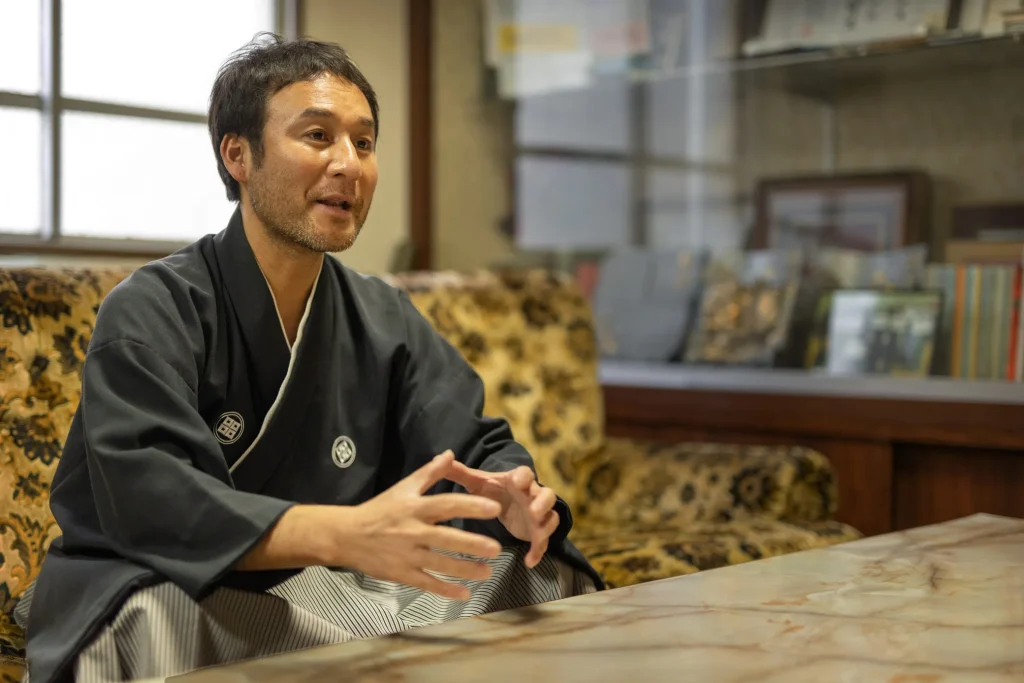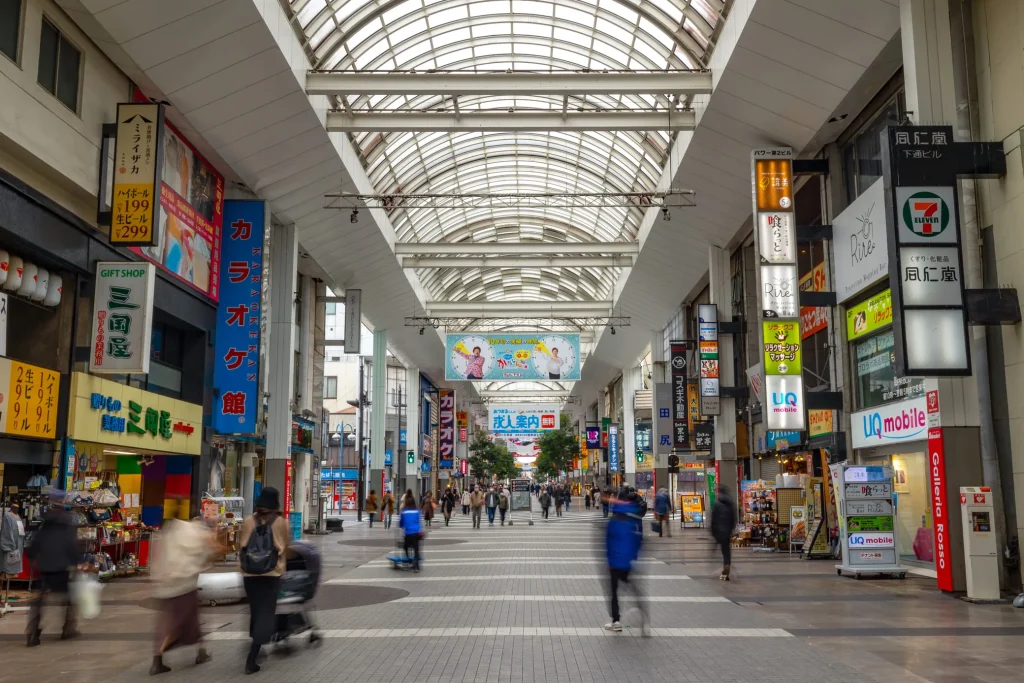
From the Past to the Present, Like Iaido: Connecting Love for the Town from Now into the Future.

松永 哲典
Akinori Matsunaga
Kumamoto-city [Kumamoto]
Akinori Matsunaga
Born in Kumamoto City in 1982. After high school, he worked in a restaurant in Italy and returned to Japan four years later. While managing his family's tenant-building business in Kumamoto City, he also teaches Iaido as the 18th head of the "Niten Ichi-ryū" school. Additionally, as the representative director of the non-profit organization "Machi-no-mirai," he is involved in revitalizing the city center, including children, youth, and local government.
Kumamoto Castle, built by the warlord Kato Kiyomasa during the Sengoku period(1467 -1615), lies at the heart of Kumamoto City, where the local community, rich in hometown pride, continues its traditions. In this town, Mr. Matsunaga Akinori, representing the non-profit organization "Machi-no-mirai," is not only the 18th head of the "Niten Ichi-ryū" school of swordsmanship founded by Miyamoto Musashi but also actively engages in community development, involving the local area. From Iaido experiences to children's events showcasing the charm of the town, we spoke to Mr. Matsunaga about his passion for the region.
From Italy to Kumamoto.
Realizing a life rooted in the community in a foreign land.
— Could you tell us about your connection with Kumamoto, Mr. Matsunaga?
Matsunaga:
I was born and raised in Kumamoto City. I was passionate about soccer during my school days, and after graduating high school, I moved to Italy to work as a waiter in a restaurant, wanting to experience the homeland of soccer. However, about four years later, the owner, who was also an acquaintance of my father, suggested, “You’ll eventually return to Japan. It would be better to get accustomed to Japanese business practices and culture now. And being a part of the family inheriting Miyamoto Musashi’s ‘Niten Ichi-ryū’ is not something everyone can do. Embracing this tradition is also wonderful,” which led to my return.

— Did your thoughts about the community or Iaido change after living in Italy?
Matsunaga:
To be honest, I had no interest in Iaido before going to Italy (laughs). With soccer, there is movement, and a clear winner and loser. It’s straightforward and fun. So, I had the impression that Iaido was a bit plain.
However, in Italy, I felt that everyone cherished and was proud of their town. Being around such people, my desire to engage with the history and culture of my hometown grew stronger. As a member of the family inheriting this local tradition, I felt a sense of duty to confront both the region and Iaido.
— After returning to Kumamoto, how did your feelings and activities evolve?
Matsunaga:
When I returned, I didn’t immediately start the kind of activities I do now. First, through my father, I was introduced to people around me, including those in the shopping district. Meeting older shop owners who treated me like their own son and people of my generation, my desire to create something with them only grew stronger. This led to the continuation of my Iaido experiences and town-building activities.


Kumamoto: A Town of Strong Local Love. Always always about to be born.
— What kind of city is Kumamoto?
Matsunaga:
I’m still trying to figure that out myself. It’s hard to describe in just a few words. However, many people here love their town. In 2016, we faced the major disaster of the Kumamoto Earthquake. Despite the hardships, everyone earnestly rooted their lives here, living through it. I think the love for our hometown has always been passed down.

— How is this love for the region currently manifesting itself?
Matsunaga:
For instance, people come up with ideas like, ‘Wouldn’t it be fun to do this in our town?’ or ‘I want to do this using our town!’ Rather than me planning alone, a variety of people from shop owners to students and government officials are involved in creating something together. I think this really opens up possibilities. This area has become a ‘field’ where things can happen when people want them to, and various activities are unfolding.
Iaido, Not Just for the Art, but for Living Well.
— As someone who offers Iaido experiences and engages in various town-building initiatives, what mindset do you maintain in your activities?
Matsunaga:
One thing is continuity. This applies to both Iaido and the town building. For example, Iaido exists today because its philosophy and techniques have been passed down through generations. Similarly, even though the themes and plans of town-building events might change, it’s important that the core values are passed on to the next generation. In our initiatives, we often hold events, but I want them to be more than just temporary excitement.

For example, we organize various projects for children. High school students research and share the town’s charm with younger kids, and we collaborate with IT companies to let them experience local folklore through XR technology. I hope that if children create happy memories in the town from a young age, they’ll want to do something for the town as adults. Just like Iaido, passed down from the past to the present, I want to pass on this love for the region from now into the future.
— Is there a particular scene you wish to leave for the future in Kumamoto?
Matsunaga:
I want to create a stronger connection with Kumamoto Castle, a symbol of our region, and preserve the memories of this town. That’s why contents like Iaido experiences, which offer a taste of the samurai’s actions and spirit, are crucial.


— What do you hope participants will take away from this experience?
Matsunaga:
At first glance, Iaido might seem like it’s about combat or competition. But it’s really about refining one’s spirit, not about defeating an opponent or winning. It’s about noticing, ‘Something is different from the ideal,’ and asking, ‘How can I achieve the ideal movement?’ while refining your actions. This process and mindset can surely be applied to daily life and work. What we teach here is ‘Iaido for living better as a person,’ not just ‘Iaido for the sake of Iaido.’ I want participants to experience this world.

